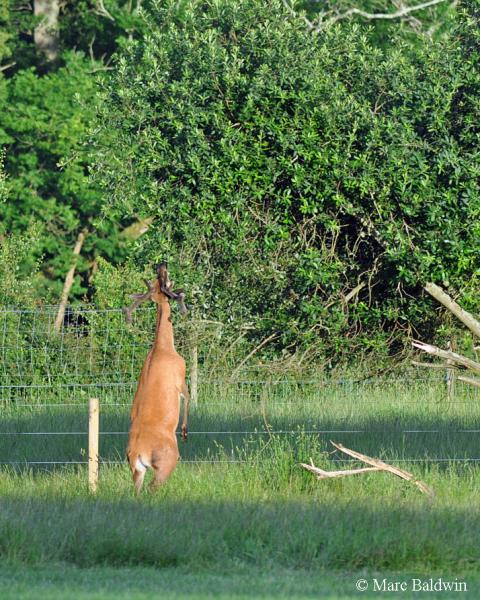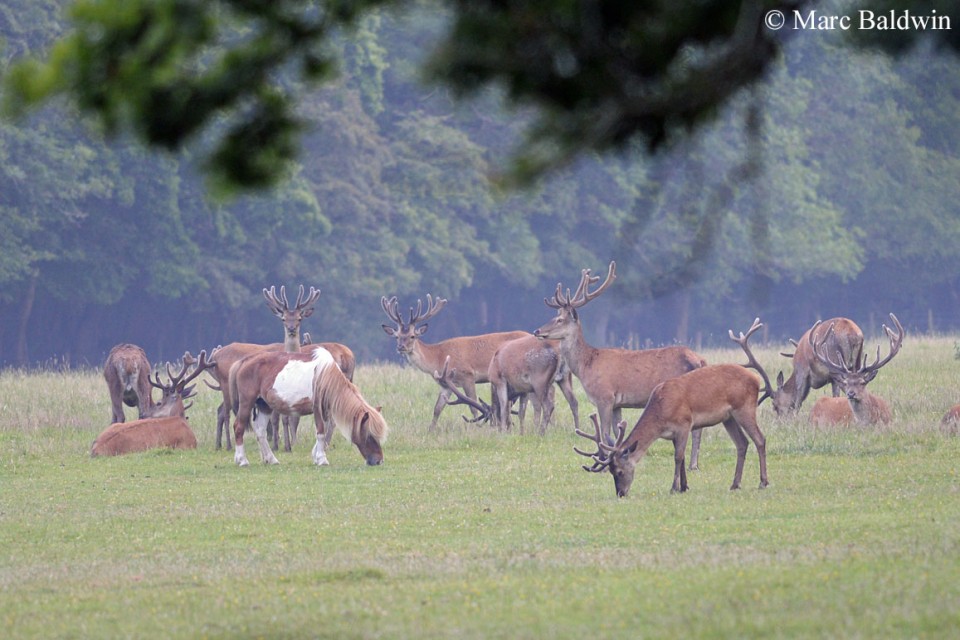Deer (Overview) Interaction with Humans - Damage to Agriculture
Back in 1998, the Ministry of Agriculture, Fisheries and Food (now known as DEFRA) commissioned a study into the economic impact of deer on England’s agriculture. Using these data and combining them with the results of DEFRA’s Agricultural Census in June 2002, biologist Charles Wilson estimated that deer cost English agriculture around £4.3 million (that’s about US$6.9m or €5m) per year – the range given was £1.1 million to £5.6 million. It seems that those farms growing cereal crops were hardest hit, with an estimated annual cost of £2.4 million (US$3.8m or €2.7m).

Shortly after Wilson published his estimate, a team of biologists, led by York University biologist Piran White, presented their data in the Economic Impacts of Wild Deer in the East of England. In their report, the biologists estimated that deer cost the economy of eastern England between £7 million and in excess of £10 million per year; around £3.2m (US$5m or €3.6m) of this represents damage to agriculture in the region and most of this to cereals.
So, what sort of problems do deer pose to agriculture? Well, predominantly, they eat crops; they are particularly partial to cereal crops such as wheat and maize. Deer will also eat root crops, especially carrots and potatoes, and fruits, although this seems to be less common than damage to cereals. The types of crops damaged seem to depend on the species in the vicinity and how close they are planted to woodland. Crop damage varies substantially in accordance with both location and season, but there are some general trends that occur in the literature.
Roe deer seem most partial to root crops and fruits and are typically responsible for most such damage, although Red deer will also indulge should the opportunity arise. In their analysis, White and his colleagues found that Fallow and Roe were the species most commonly implicated with damage to cereal crops and, overall, two-thirds of damage to agricultural crops was attributable to these two species. The biologists also reported that deer damage to agricultural crops tended to be concentrated close to (i.e. within about 1km, or just under a mile) woodland edges. In conjunction with crops that are eaten, there is often associated damage from trampling as the deer move around the plots.
Crop damage is associated with deer density as much as it is with species. In their report, White and his team wrote: “The medium threshold landscape densities (deer per km2) at a 10-km square scale for deer damage to agriculture are estimated to be as follows: fallow, 0.437; muntjac, 1.838; red, 0.231; roe, 0.971.” So, for example, damage to crops is more likely to result if there is more than one fallow deer per 2.5 square kilometres.

The link between deer and agriculture isn’t confined to crop damage – they are also known to compete with domestic livestock for grazing and there have been some instances where deer have been hosts for diseases that can be passed to livestock. Red deer, for example, are known to compete with sheep for grazing resources, while they are complimentary grazers with cattle. The tooth arrangement and jaw structure of a grazer dictates the height of the grass it can eat. Cattle have a large bite and crop the grass to a height just right for deer. Unfortunately, deer and sheep have a roughly equal bite and so the two compete for the same length of grass.
Deer have also been implicated in the spread of the tick Ixodes ricinus, which in turn is the main host for the bacteria Borrelia burgdorferi that causes Lyme disease. Deer are known to be susceptible to the Aphtae epizooticae (Foot and Mouth) virus and there is also some evidence that deer can transmit the Mycobacterium bovis bacteria responsible for bovine tuberculosis, albeit that the risk is considered low. It has also been suggested that deer could aid the spread of bluetongue – the disease is caused by the Orbvirus retrovirus, which is spread by Culicoides midges. According to the Parliamentary Office of Science and Technology (POST), deer can act as a “reservoir in which the virus can over-winter, and in which new viral strains can establish”.

Deer can also pose problems for forestry. In their POSTnote on wild deer, the POST write: “Deer can cause significant damage to forestry by reducing tree regeneration, browsing saplings, and bark stripping”. Bark stripping tends to be confined to the antler cleaning and rutting seasons, although deer will strip and eat bark for various reasons, especially during the winter. In some cases, bark may constitute a large proportion of the diet. A review of bark stripping behaviour in deer across Europe published in 2006 found that in areas where winters were severe (i.e. heavy snow), bark contributed more than 10% to the diet of Red deer.
The study also uncovered highly variable rates of bark stripping, ranging from none to 84% with “less damage in Scotland than in other European sites”. Nonetheless, the Forestry Commission for Scotland estimate that damage to forests caused by deer costs them around £4.5m every year. Fences can be erected around plantations, although these yield variable results. Young saplings can also be encased in a Tuley tube to protect it during the crucial early growth stage. These tubes are now common in our countryside (some estimates suggest there may be 70 million in the UK) and are named after their inventor, Forestry Commission biologist Graham Tuley. In deer parks, it is now common practice to see wooden or metal fences around trees to protect them from the deer.